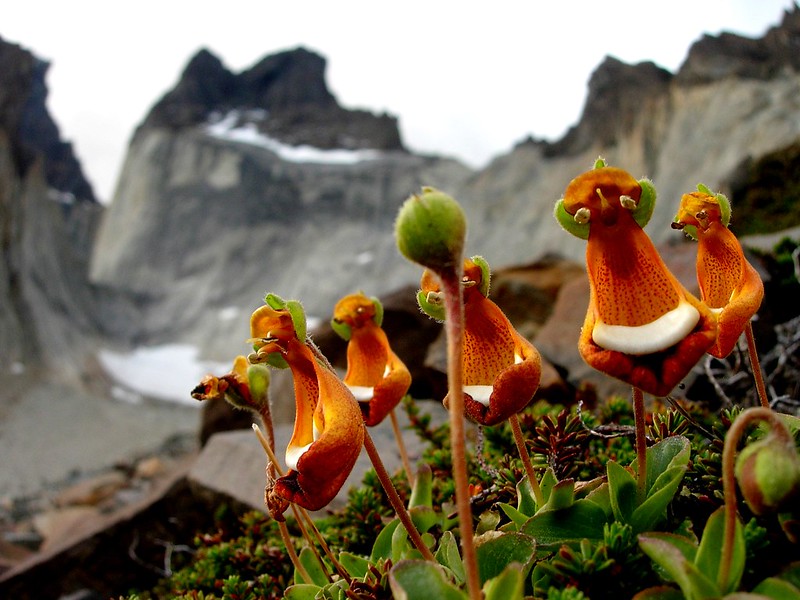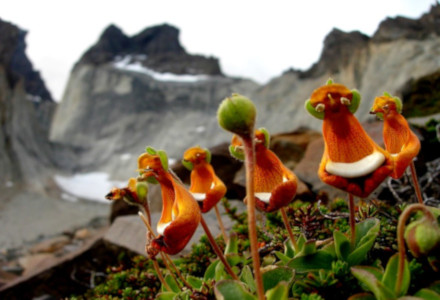
Happy Alien Facts
- First of all, the term Happy Alien actually does serve as the common name of this astounding plant. It also ranks as a most unusual species. Quite understandably, its common name derives from the unique appearance of its blooms.
- Furthermore, it grows naturally in only one location in the world. However, it eventually spread, presumably due to human activity. As a result, it now appears in Chile and Argentina. But, for now, it only appears there in scattered locations.
- In addition, it was Charles Darwin himself who officially discovered it. This amazing discovery occurred during his 1831-1836 expedition. But, other individuals previously described it unofficially as early as 1791.
- For the moment, the IUCN it does not yet list it on its Red List of Threatened Species. However, its restricted range does make it vulnerable. Its potential threats include habitat loss and climate change.
Related Articles
Hooker’s Lips Doll’s Eye Orpheus Flower
Happy Alien Physical Description
Firstly, the highly distinctive looking Happy Alien holds a somewhat unusual, though not unknown, status. That’s because botanists classify this truly surprising small plant as both an evergreen and a perennial species.
Secondly, a fully grown plant rarely exceeds 5 in (12.7 cm) in height. Also, the leaves likewise stay small and produce a decidedly tongue-shaped structure. Similar to most other alpine plants, this plant possesses a relatively shallow system of roots.
However, the lovely and distinctive flowers constitute its most unique feature. They seem pouch-like in shape and grow to roughly 2 in (5 cm) in length. The shape of this feature serves as the source of its name.
These typically develop primarily orange-yellow in color. However, combinations of red shades present develop on parts of the bloom, as well. These grow on short, slender stems, with a white band also being present on the mouth.
- Kingdom: Plantae
- Phylum: Angiosperms
- Class: Eudicots
- Order: Lamiales
- Family: Calceolariaceae
- Genus: Calceolaria
- Species: C. uniflora
Happy Alien Distribution, Habitat, and Ecology
Most notably, though it spread via the actions of man, the remarkable Happy Alien evolved as native only to a highly isolated range. That’s because this little charmer originally grew only in the archipelago of Tierra del Fuego, in South America.
The Happy Alien evolved as a cold climate mountain species. Its typical habitat includes a wide range of types, however, as long as these stay open and well drained. These include coastal rock and sand regions, scrubland, moors, cliffs, and steppes.
Furthermore, the appropriately named blooms appear throughout the summer. Its abundant fruits consist of small capsules. However, unlike most blooming plants, this species attains pollination through birds, rather than by insects.
Finally, its aromatic blooms draw multitudes of birds to feed on the uncolored band. In the process, these collect its pollen, which then gets transmitted to the next flower the animal visits, ensuring its propagation.
Species Sharing Its Range
Chilean Firebush Sea Spider Panda Dolphin
Check out our other articles on 6 Mysterious Natural Phenomena, Indian Bullfrog, Loire Valley, Hawksbill Sea Turtle, Gambian Spotted-Eye Flower Mantis, Araripe Manakin

